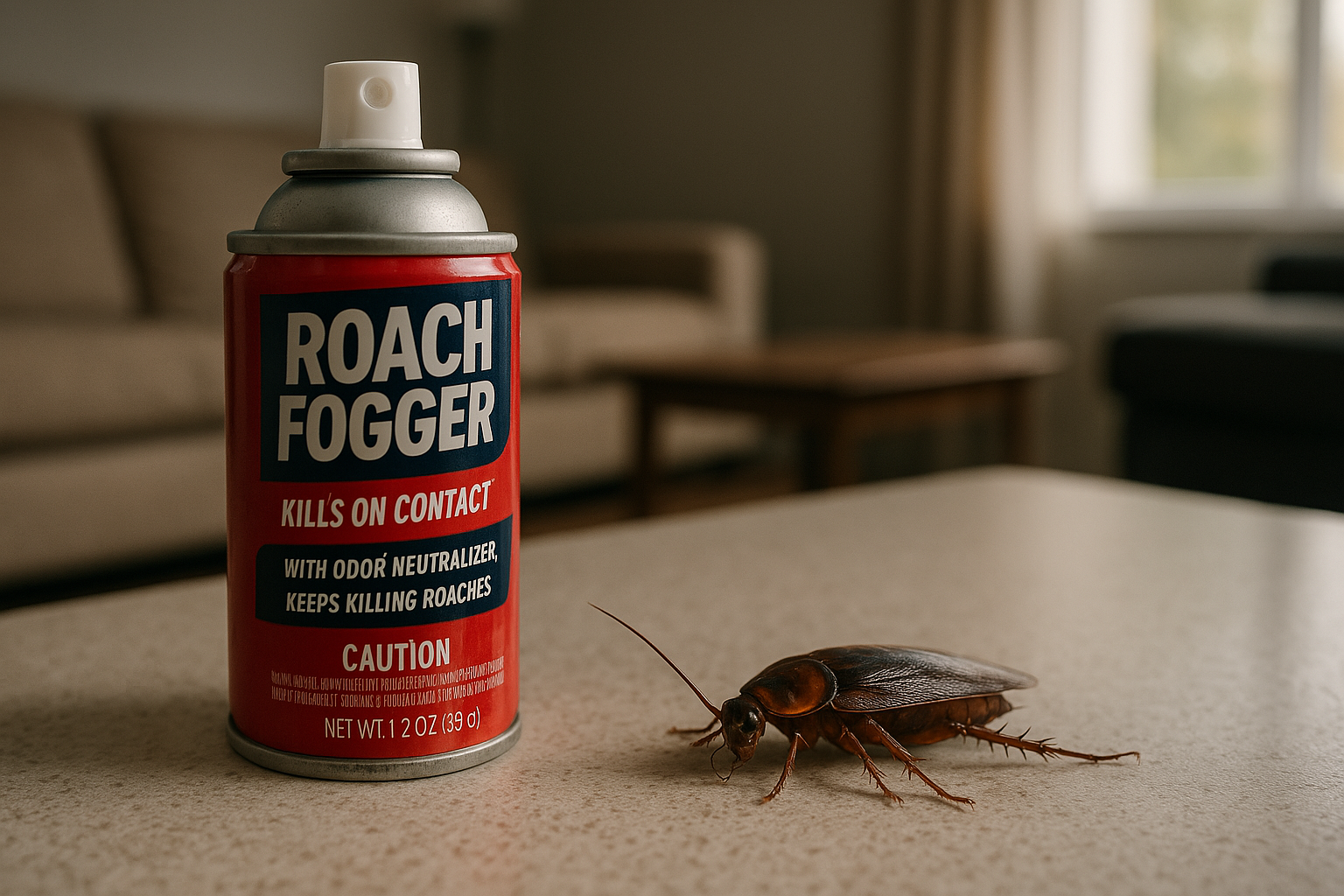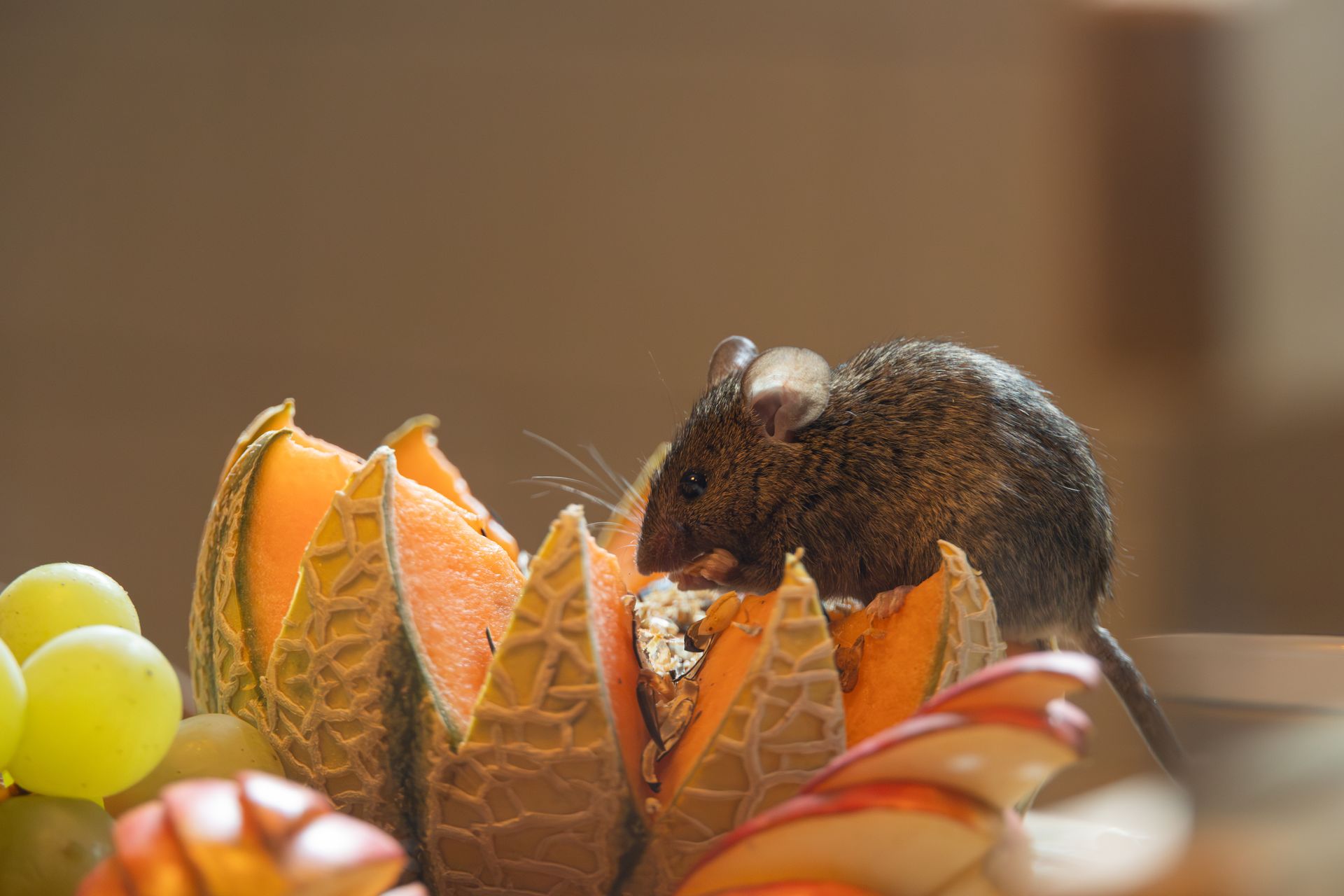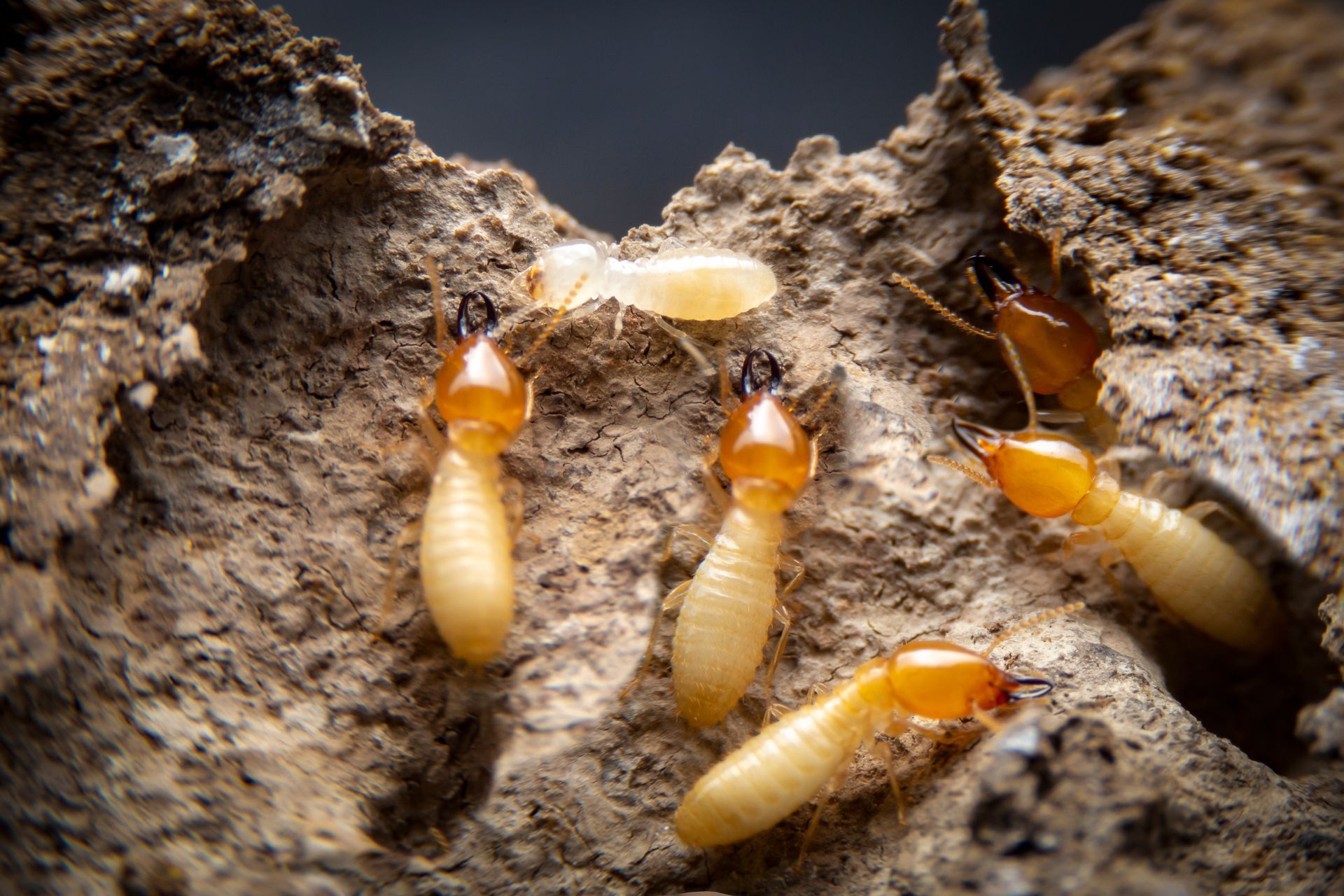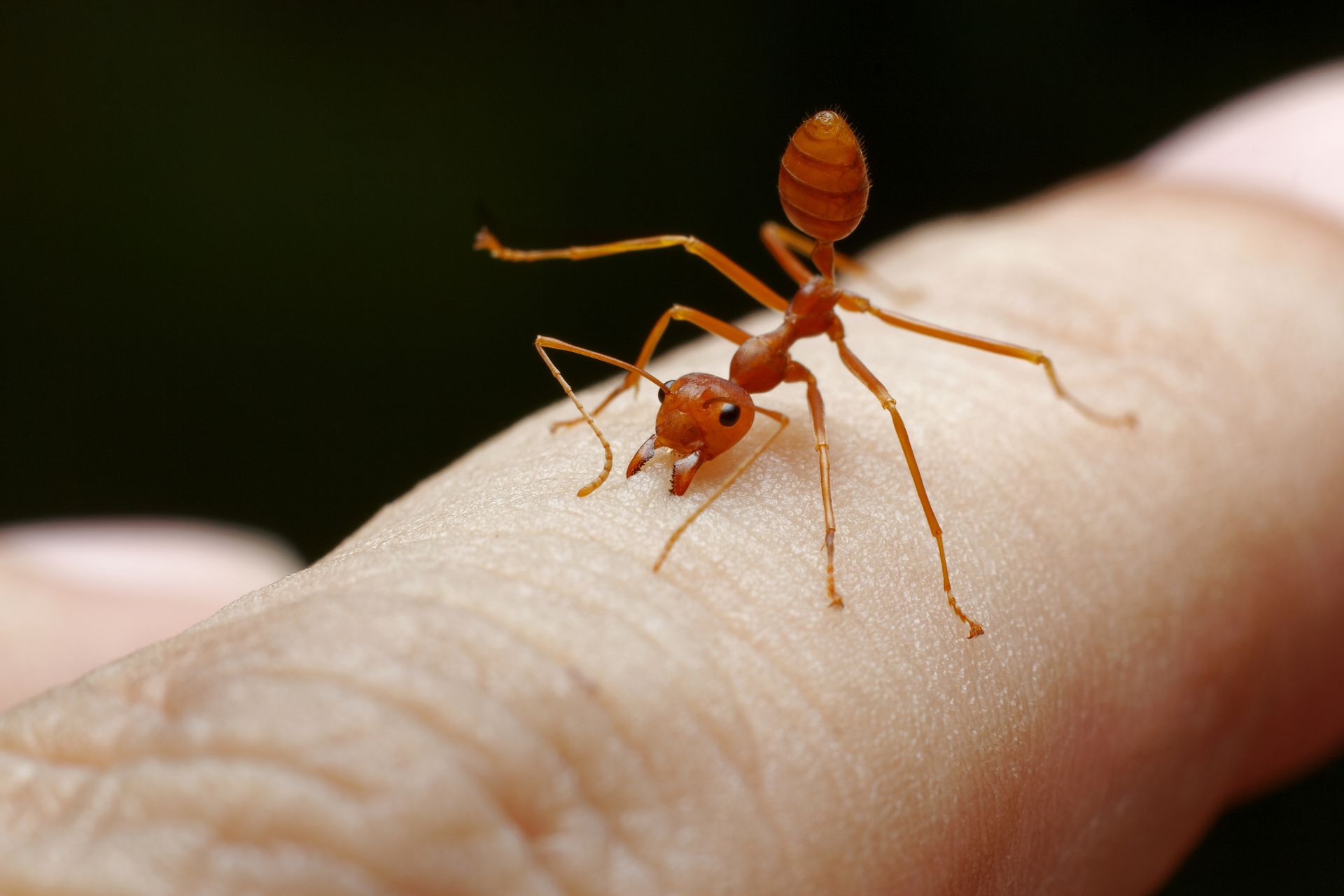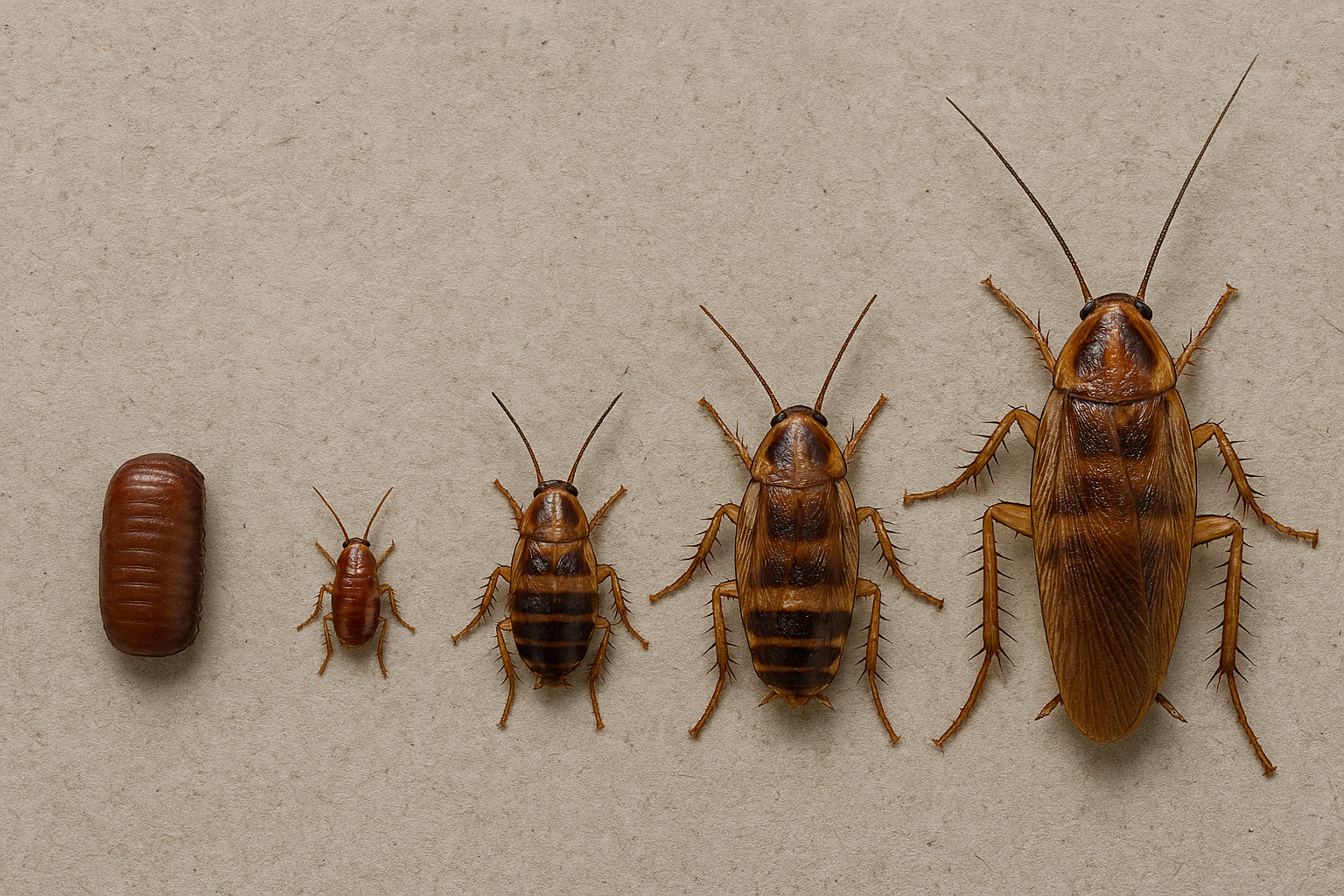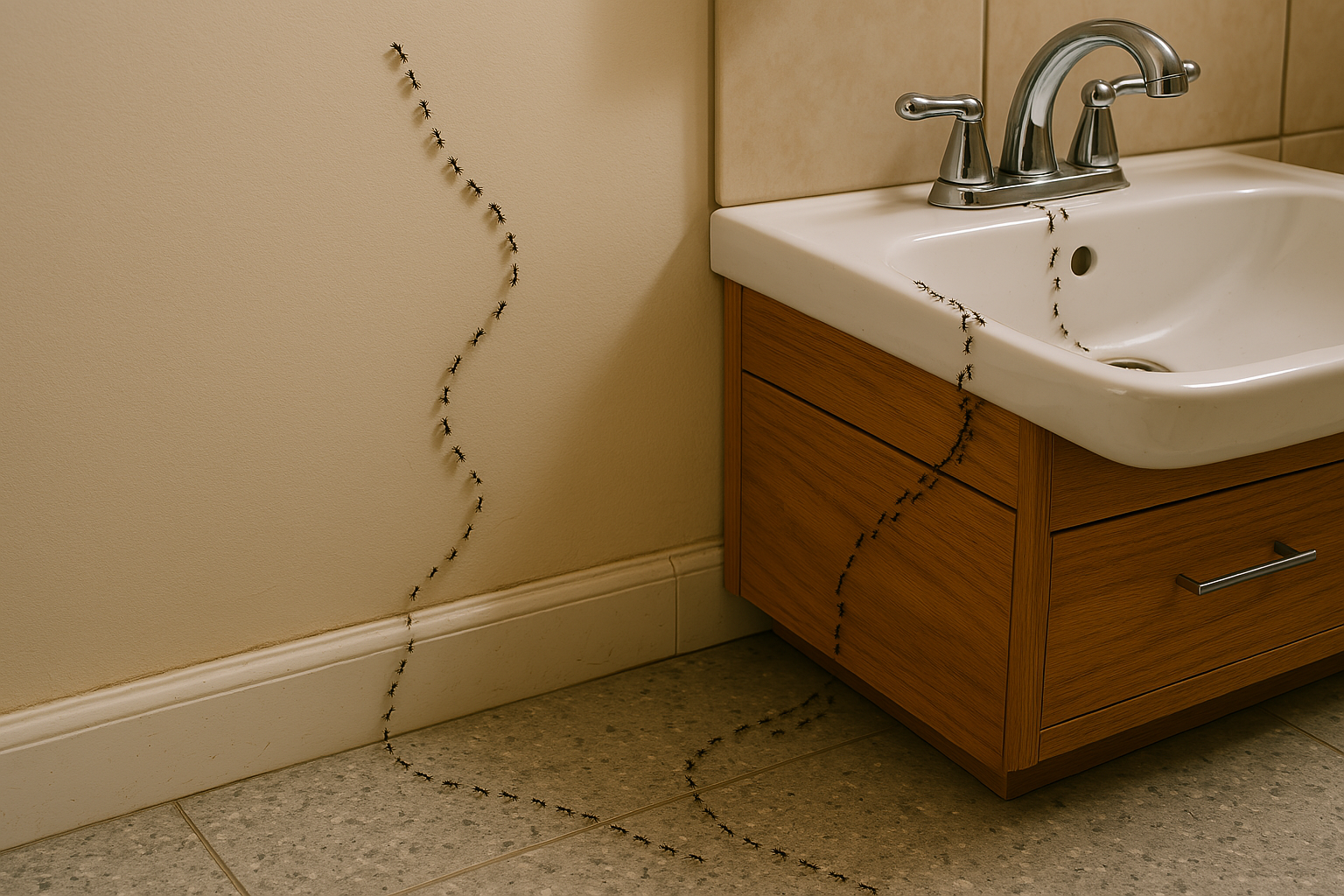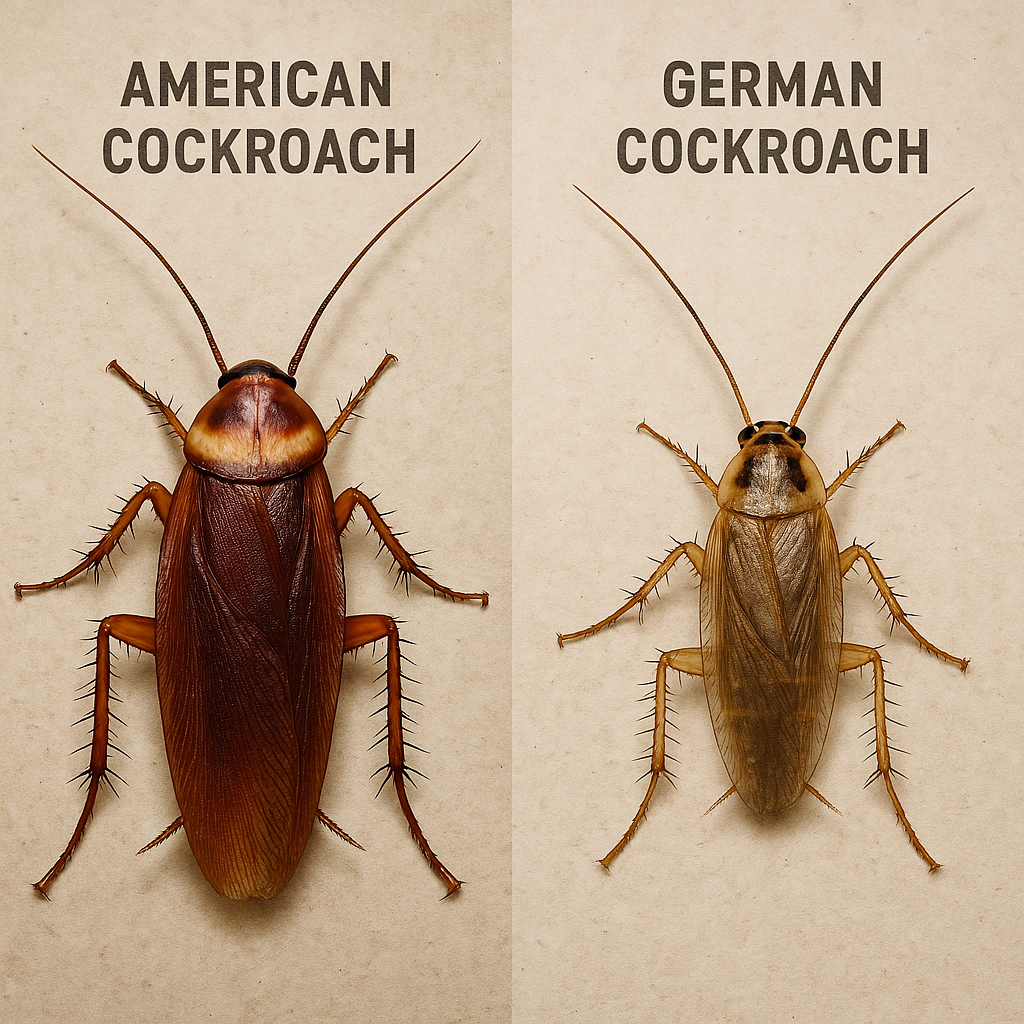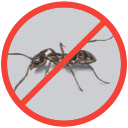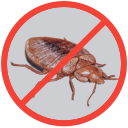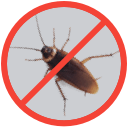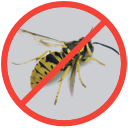How Do Ants Get in the House? Complete Entry Point Guide

Discovering a line of ants marching across your kitchen counter can transform a peaceful morning into a frustrating battle against these persistent invaders. Identifying the pathways these persistent insects use to breach your dwelling serves as the foundation for successful exclusion strategies and safeguarding your residence from unwanted colony establishment. Ants are remarkably resourceful insects that exploit even the tiniest openings, with some species capable of squeezing through gaps as small as 1/64 of an inch, making traditional barrier methods challenging for untrained homeowners.
The process of ant invasion involves sophisticated scouting behaviors, chemical communication through pheromone trails, and coordinated colony responses that can quickly turn a minor intrusion into a major infestation. From foundation cracks and window gaps to utility line openings and HVAC systems, ants have evolved to identify and exploit structural vulnerabilities that homeowners often overlook. Understanding these entry strategies and the biological factors that drive ant behavior provides the foundation for effective prevention and control measures that protect your home year round.
How Ants Find and Choose Homes to Invade
The Ant Scouting Process
Ant home invasion begins with systematic exploration conducted by specialized scout ants whose primary mission involves assessing potential invasion targets for their colonies. These scout ants evaluate three critical factors when examining structures: food availability, water sources, and suitable shelter opportunities that can support colony expansion. Scout ants employ sophisticated sensory capabilities to detect microscopic food particles, moisture gradients, and structural weaknesses that indicate favorable invasion conditions.
The decision making process for colony invasion involves complex chemical and behavioral communications between scouts and their parent colonies. Successful scouts return to their nests with detailed information about resource availability, entry point accessibility, and competitive pressures from other ant species or environmental threats. Only when scout assessments indicate sufficient resources and manageable risks do colonies commit to invasion efforts, making the scouting phase critical for determining whether structures become targets for persistent ant pressure
[1].
Pheromone Trail Communication
Once scout ants identify promising invasion opportunities, they establish chemical communication networks through pheromone tracking that guides additional colony members to discovered resources [2]. Chemical messaging systems enable experienced foragers to relay resource quality data to colony members who haven't encountered the discovered food, where the intensity of scent marking dictates the strength of recruitment signals that mobilize collective action. These chemical trails create persistent pathways that can remain active for hours or days, depending on environmental conditions and trail reinforcement by subsequent foragers.
Trail pheromones may comprise a single compound or, in exceptional cases, a blend of as many as 14 compounds, existing in glandular secretions in nanogram to picogram quantities while being detected by workers in minute amounts on trails. The sophistication of this chemical communication system explains why ants continue returning to the same entry points even after initial food sources are removed, as established pheromone networks provide navigational infrastructure that guides continued invasion attempts until trails naturally degrade or are actively disrupted.
Seasonal Invasion Patterns
Ant invasion patterns fluctuate dramatically throughout the year, with peak activity typically occurring during spring and summer months when colony reproduction and expansion drives increased foraging intensity [3]. Spring emergence triggers extensive scout deployment as colonies assess winter damage to established territories and seek new resource opportunities to support rapidly growing populations. Summer heat intensifies indoor invasion pressure as outdoor food sources become scarce and indoor environments provide consistent temperature and moisture conditions.
Fall invasion patterns shift toward winter preparation, with many species seeking indoor shelter opportunities that provide protection from temperature extremes and consistent access to food and water resources. Weather related invasion triggers include heavy rainfall that floods outdoor nests, extreme heat that drives moisture seeking behavior, and seasonal food scarcity that increases competition for available resources. Regional variations significantly influence invasion timing, with warmer climates experiencing year round pressure while temperate regions see distinct seasonal cycles that homeowners can anticipate and prepare for through targeted prevention strategies.
Common Entry Points Ants Use to Access Homes
Pinpointing the specific breach points these insects exploit becomes fundamental to developing successful exclusion measures that maintain your home's integrity. These persistent insects can exploit numerous structural vulnerabilities and small openings that homeowners often overlook:
- Foundation cracks and gaps - Settlement cracks, expansion joints, and construction seams where different building materials meet provide direct pathways from soil level ant territories into basements and ground floor areas
- Door and window openings - Worn weather stripping, gaps under door thresholds, sliding door track debris, and window frame separations create consistent access routes that worsen as sealing materials deteriorate over time
- Utility line penetrations - Electrical conduits, plumbing pipe openings, cable installations, and internet line entries often receive inadequate sealing and provide protected pathways directly into wall cavities and indoor spaces
- Screen damage - Tears and holes in window screens offer direct access routes that bypass traditional barrier protections, allowing ants to enter through open windows and doors
- HVAC and ventilation systems - Air return vents, ductwork connections, bathroom fans, dryer vents, and kitchen exhausts provide both access opportunities and attractive destinations due to airflow patterns and moisture accumulation
- Wall voids and subflooring access - Interior wall cavity access through electrical outlets, switch boxes, and junction points allows ants to establish extensive travel networks within structural systems while remaining largely undetected
- Attic access points - Soffit vents, ridge vents, and roof penetrations enable ants to establish upper level colonies that can subsequently invade living spaces through ceiling mounted fixtures and utility connections
- Insulation and vapor barrier gaps - Tears and gaps in insulation materials and vapor barriers create both entry opportunities and attractive nesting sites within wall and attic systems where ants can establish satellite colonies
Specific Entry Scenarios and Methods
Active vs. Passive Entry
Active entry scenarios involve deliberate invasion attempts by scout ants and following workers who actively seek access through identified structural openings and deliberately exploit discovered entry points. Direct invasion through open access occurs when doors, windows, or other access points remain open long enough for ant exploration and subsequent trail establishment. These scenarios often result in rapid colony response as successful scouts quickly establish pheromone trails that guide intensive follow up invasion efforts.
Passive entry methods include accidental introduction through items brought indoors, such as firewood, potted plants, storage containers, and packages that harbor hitchhiking ants or even small satellite colonies. Following utility workers or service personnel provides temporary access opportunities when exterior doors remain open during maintenance activities, delivery processes, or contractor visits. These passive introduction methods can be particularly problematic because they often bypass exterior barrier protections and introduce ants directly into interior spaces where detection and control become more challenging.
Size Requirements for Ant Access
The minimum gap size required for ant access varies significantly among species, but many common household invaders can exploit openings smaller than homeowners typically consider problematic. These insects exhibit remarkable size diversity, spanning from less than one millimeter to over five centimeters, while typical household varieties such as wood-boring species commonly measure between six and twelve millimeters from head to abdomen. However, smaller species such as little black ants and pharaoh ants require much smaller access points, with some species capable of squeezing through gaps equivalent to 1/64 inch or approximately 0.4 millimeters.
Ant body flexibility enables entry through openings that appear too small for their body size, as their segmented exoskeletons and flexible joints allow significant compression during passage through tight spaces. Species specific size considerations become important for targeted exclusion efforts, as sealing strategies effective against larger carpenter ants may prove inadequate against smaller invaders like pharaoh ants or thief ants. This size variability makes comprehensive ant proofing challenging for homeowners who often underestimate the precision required for effective exclusion barrier installation.
Environmental Factors Affecting Entry
Temperature and weather influences significantly impact ant entry behaviors, as seasonal temperature fluctuations drive indoor seeking behavior during extreme heat, cold, or moisture conditions. Moisture detection capabilities allow ants to identify and target areas with plumbing leaks, condensation problems, or humidity accumulation that indicate favorable conditions for colony establishment. Seasonal daylight changes affect ant activity patterns and invasion timing, with many species showing increased invasion pressure during specific photoperiod conditions.
Barometric pressure changes associated with weather fronts often trigger increased ant activity and exploration behavior that leads to higher entry attempt rates during storm systems and pressure fluctuations. These environmental factors explain why ant invasion problems often appear suddenly and intensify during specific weather conditions, making timing critical for effective intervention strategies that address environmental triggers before they result in established infestations.
What Attracts Ants to Your Home
Ants are drawn to homes by three primary factors that provide the resources necessary for colony survival and growth. Understanding these attraction sources is crucial for effective prevention strategies:
Food Sources
- Kitchen spills and crumbs - Food particles from cooking and eating activities provide immediate nutrition sources that establish initial ant interest and sustained foraging pressure
- Pet food storage - Dry food containers and feeding areas offer concentrated nutrition sources that can support extensive colony growth when accessible to foraging ants
- Pantry storage problems - Improperly sealed containers, spill accumulation, and inadequate cleaning create long term attraction sources that sustain invasion pressure
- Garbage and compost areas - Food waste, recycling containers, and disposal systems retain organic matter and food residues that attract diverse ant species with different dietary preferences
- Food preparation areas - Countertops, sinks, and cooking surfaces accumulate residues from meal preparation that provide ongoing attraction sources for foraging ants
Water Sources
- Plumbing leaks and drips - Consistent moisture sources from damaged pipes, faucets, and fixtures provide essential water resources that support colony establishment and growth
- Condensation accumulation - Moisture buildup around HVAC systems, windows, and appliances creates localized water sources that attract moisture dependent ant species
- Plant watering activities - Indoor plant care, outdoor irrigation, and landscape watering create temporary but recurring moisture attractions that establish visitation patterns
- High humidity environments - Bathroom and kitchen moisture from cooking, bathing, and dishwashing creates optimal humidity conditions for many ant species
- Poor drainage areas - Water accumulation around foundations, in basements, or near entry points provides attractive moisture sources for colony establishment
Shelter Opportunities
- Temperature controlled environments - Heated and cooled indoor spaces eliminate environmental stresses and provide optimal conditions for ant colonization
- Protected nesting sites - Wall voids, insulation materials, and structural cavities offer security from predators, weather, and territorial competition
- Dark, undisturbed areas - Storage rooms, basements, utility spaces, and closets provide ideal conditions for colony establishment without human interference
- Proximity to resources - Nesting locations near food and water sources minimize energy expenditure while maintaining access to survival necessities
- Secondary attractants - Houseplants, electrical warmth from appliances, and persistent scent trails from previous infestations continue drawing ant interest long after initial attractions are removed
How Ants Navigate and Establish Indoor Colonies
Trail Following and Reinforcement
Pheromone trail establishment creates persistent navigation networks that continue guiding ant traffic long after initial scout discoveries, with successful foragers reinforcing trails through repeated pheromone deposition during subsequent trips. Trail pheromone effectiveness lasts approximately 20 minutes for some species, though trail reinforcement by additional workers can maintain active pathways for extended periods. Multiple trail establishment occurs when successful foragers create branching networks that connect single entry points to multiple resource locations, creating complex pathway systems throughout structures.
Trail intersection navigation becomes increasingly sophisticated as colonies develop extensive indoor networks, with ants capable of distinguishing between different trail intensities and selecting optimal routes based on current resource availability and trail freshness. Communication efficiency improves over time as repeated use strengthens primary pathways while lesser used trails fade, creating streamlined transportation networks that maximize foraging efficiency and resource exploitation.
Colony Establishment Process
Initial scouting assessment determines whether discovered indoor environments provide sufficient resources and security for colony expansion beyond simple foraging operations. Worker recruitment patterns begin with limited numbers following established trails, gradually increasing as resource assessment confirms suitability for expanded operations. Satellite colony development occurs when indoor conditions prove particularly favorable, leading to establishment of secondary nesting sites that may eventually become independent colonies.
Queen relocation considerations become relevant when indoor environments provide superior conditions compared to outdoor parent colonies, particularly during extreme weather conditions or when outdoor territories face competition pressure. The decision process for establishing permanent indoor colonies involves complex assessments of resource availability, security from disturbance, and long term sustainability that determine whether temporary foraging becomes permanent invasion.
Indoor vs. Outdoor Colony Dynamics
Seasonal colony movement patterns reflect changing environmental conditions and resource availability, with many species maintaining flexible colony structures that can shift emphasis between indoor and outdoor operations. Indoor nesting site selection prioritizes locations that provide optimal temperature regulation, moisture access, and protection from human interference while maintaining connectivity to outdoor territories when beneficial.
Resource sharing between indoor and outdoor colony segments creates complex logistical networks that can sustain large populations through coordinated foraging operations across multiple environments. Winter indoor colony behavior often intensifies as outdoor conditions become prohibitive, leading to increased reliance on indoor resources and potential establishment of permanent indoor populations that persist year round regardless of outdoor conditions.
Species Specific Entry Behaviors
Various insect lineages have developed specialized infiltration methods and habitat selections that mirror their particular physiological needs and evolved behavioral traits. Understanding these species specific behaviors enables more targeted prevention and control approaches that address the particular challenges posed by different invaders.
- Carpenter Ants - Demonstrate strong moisture seeking behavior that drives them toward areas with water damage, plumbing leaks, and condensation problems, often accessing homes through damaged wood around windows, doors, and structural elements. Their wood penetration methods involve excavating galleries through moisture compromised materials, creating extensive tunnel networks that can cause significant structural damage while providing protected pathways for colony expansion throughout wooden building components.
- Pavement Ants - Excel at foundation level access through cracks in concrete slabs, basement walls, and ground level openings that provide direct routes from their preferred soil nesting sites. Their slab penetration methods take advantage of settling cracks, expansion joints, and construction gaps that develop along foundation perimeters, while their attraction to heated floors and basement warmth during winter months drives persistent indoor invasion attempts.
- Odorous House Ants - Exploit remarkably small gaps due to their tiny size, following utility lines and plumbing penetrations to access interior spaces while demonstrating exceptional ability to locate and target moisture sources. Their indoor colony establishment capacity allows them to create extensive networks of interconnected nesting sites within wall voids, insulation, and structural cavities that can persist year round.
- Argentine Ants - Employ supercolony invasion patterns involving coordinated multi point access strategies that can overwhelm traditional exclusion efforts through sheer numbers and persistence. Their continuous entry pressure and ability to maintain year round activity in warm climates makes them particularly challenging for homeowner management, while their multiple queen colonies enable rapid recovery from control efforts and persistent reinvasion attempts.
Detection and Identification Methods
Finding Entry Points
Effective entry point detection requires systematic visual inspection techniques that examine both obvious and hidden access routes around structures, with particular attention to areas where different building materials meet and structural settling creates gaps. Following ant trails backward from indoor sightings often reveals primary access routes, though this requires patience and careful observation during peak activity periods when trails are most apparent.
Peak activity observation times typically occur during early morning and evening hours when many species are most active, though species specific activity patterns may require adjusted timing for effective detection.
Distinguishing Entry Types
Primary access points represent main entry routes that support heavy ant traffic and serve as major highways for colony invasion efforts, while secondary access points provide alternative routes that may receive sporadic use or serve backup functions. Active entry evidence includes visible ant trails, fresh pheromone deposits, and current ant activity, while historical entry evidence includes old trails, previous sealing attempts, and structural damage from past infestations.
Seasonal versus permanent access routes require different management approaches, as temporary openings created by weather conditions may not warrant permanent sealing investments while persistent structural gaps require comprehensive repair strategies. Single versus multiple colony entries present different challenge levels, with single colony invasions often responsive to targeted approaches while multiple colony pressure requires comprehensive exclusion strategies.
Documentation and Monitoring
Photography and mapping techniques help homeowners and professionals track entry point locations, monitor sealing effectiveness, and document problem areas for future reference during ongoing ant prevention efforts. Activity level assessment involves tracking ant numbers, trail intensity, and invasion timing to understand colony size, resource commitment, and invasion priorities that guide control strategy development.
Seasonal pattern tracking reveals cyclical invasion behaviors that enable proactive prevention timing, while progress monitoring methods help evaluate control strategy effectiveness and identify areas requiring additional attention or modified approaches for successful long term pest exclusion.
Prevention and Sealing Strategies
Material Selection for Sealing
Successful ant exclusion requires careful selection of sealing materials appropriate for specific entry point types, environmental conditions, and expected durability requirements. Silicone based caulks provide excellent flexibility and weather resistance for exterior applications, while acrylic latex caulks offer easy application and paintability for interior sealing projects. Exterior versus interior grade materials address different exposure conditions, with exterior products requiring UV resistance, freeze thaw durability, and moisture resistance that interior applications may not need.
Expanding foam applications work effectively for large gap situations and utility penetrations, providing both sealing and insulation benefits while accommodating irregular shapes and sizes. Weather stripping options include various materials designed for different door and window applications, with material durability considerations balancing initial cost against replacement frequency and performance expectations. Color matching considerations and aesthetic requirements may influence material selection for visible sealing applications where appearance matters to homeowners.
Systematic Sealing Approach
Priority identification methods help homeowners focus sealing efforts on the most critical entry points first, addressing primary access routes and high traffic areas before tackling secondary or seasonal entry points. Interior versus exterior sealing strategies require different approaches, with exterior sealing providing first line defense while interior sealing offers backup protection and compartmentalization benefits.
Seasonal timing considerations influence sealing effectiveness, as certain materials perform better during specific weather conditions while ant activity patterns may make some timing more strategic for intervention success. Quality control and testing procedures ensure sealing effectiveness by verifying gap closure, material adhesion, and barrier integrity before considering exclusion efforts complete.
Long term Maintenance
Regular inspection schedules maintain sealing effectiveness by identifying wear patterns, weather damage, and new entry points before they become established access routes for ant invasion. Wear pattern identification helps predict failure points and guide preventive maintenance timing that addresses problems before they compromise exclusion barriers.
Seasonal preparation routines coordinate sealing maintenance with ant activity patterns, addressing winter damage before spring emergence and reinforcing critical barriers before peak invasion seasons. Professional assessment timing provides expert evaluation of exclusion effectiveness and identification of problems that may not be apparent to homeowners during routine maintenance activities.
Environmental Modifications
Moisture control addresses one of the primary attraction factors for many ant species through leak detection and repair, humidity management, drainage improvements, and ventilation enhancements that eliminate conditions favoring ant establishment. Food attractant elimination requires comprehensive kitchen cleanliness protocols, proper storage container selection, pet food management strategies, and garbage disposal practices that remove nutritional attractions sustaining ant interest.
Landscape modifications involve vegetation management near structures, mulch and ground cover considerations, tree and shrub trimming programs, and outdoor attractant removal that reduces ant populations and invasion pressure around building perimeters. These environmental modifications create comprehensive prevention approaches that address attraction factors while supporting physical exclusion barriers for maximum effectiveness.
Warning Signs of Entry Point Compromise
Several critical indicators signal that ant entry points have been compromised and require immediate attention to prevent escalating infestation problems. Visible ant activity increases often indicate new entry point development or failure of existing exclusion barriers, requiring prompt investigation and remedial action. New trail establishment patterns suggest ants have discovered alternative access routes or that previous sealing efforts have failed, while seasonal pattern changes may indicate structural damage or barrier degradation that creates new invasion opportunities.
Structural damage evidence such as wood shavings from carpenter ant activity, compromised building materials, or visible excavation damage indicates serious entry point problems requiring professional assessment and repair. These warning signs demand immediate attention because delayed response allows ant populations to establish and expand, making subsequent control efforts more difficult and expensive while increasing potential for structural damage and ongoing infestation problems.
Regional Considerations
Climate Specific Challenges
Humid climate considerations include enhanced moisture attraction factors, accelerated material degradation, and year round ant activity that requires adjusted prevention strategies compared to drier environments. Arid climate attraction factors often center around water sources and indoor moisture, making plumbing areas and irrigation systems primary targets for invasion attempts.
Seasonal temperature variations create different invasion pressures throughout the year, with extreme weather events driving intensive indoor seeking behavior that can overwhelm exclusion barriers during peak pressure periods. Regional ant species differences require location specific prevention approaches that address local species biology, behavior patterns, and environmental preferences.
Building Type Variations
Older home vulnerability stems from settling foundations, outdated construction techniques, and material degradation that creates numerous entry opportunities requiring comprehensive assessment and targeted repairs. New construction advantages include modern sealing techniques and materials, though installation quality and long term maintenance remain critical for sustained effectiveness.
Foundation type considerations include differences between slab on grade, basement, and crawl space construction that create different entry point vulnerabilities and require specialized prevention approaches. Construction material influences affect entry point development patterns, with different materials creating specific vulnerability types that require appropriate sealing strategies and maintenance programs.
How To Get Rid of Ants in the House: Professional vs. DIY Approaches
When to Attempt DIY Sealing
Simple crack and gap repairs using readily available materials can provide effective results for homeowners with basic skills and appropriate tools, particularly for obvious structural entry points and straightforward sealing applications. Routine maintenance tasks including weather stripping replacement, minor caulking gap projects, and seasonal preparation work often fall within typical homeowner capabilities when proper materials and techniques are employed.
Seasonal preparation work such as pre-winter sealing and spring maintenance activities can be effectively managed by homeowners who understand basic sealing principles and maintain consistent inspection schedules. Minor entry point closure using appropriate sealants and techniques provides cost effective solutions for isolated problems that don't require specialized expertise or equipment.
Professional Service Benefits
Complex structural assessments require specialized knowledge and experience to identify hidden entry points, assess structural integrity, and develop comprehensive exclusion strategies that address root causes rather than just obvious symptoms. Warranty and guarantee coverage offered by professional services provides long term protection and accountability for exclusion effectiveness, while integrated pest management approaches combine exclusion strategies with targeted treatments and ongoing monitoring for comprehensive protection. Professional expertise ensures proper material selection, application techniques, and quality control that maximizes exclusion effectiveness while avoiding common DIY mistakes that compromise long term success.
Cost Benefit Analysis
Material and time investments required for effective DIY exclusion often exceed homeowner expectations, particularly when comprehensive sealing requires specialized tools, multiple material types, and extensive labor hours. Long term effectiveness comparisons between professional and DIY approaches often favor professional services when considering durability, comprehensiveness, and success rates over extended periods.
Potential damage cost avoidance through effective exclusion provides significant value when considering the expense of structural repairs, contaminated food replacement, and ongoing treatment costs associated with persistent infestations. Professional service value includes not only immediate exclusion benefits but also long term monitoring, maintenance support, and expertise for addressing future problems before they become major infestations.
Contact EcoGuard Pest Management if You Are Dealing with Ants
When ant entry point problems exceed DIY capabilities or continue despite homeowner efforts, professional intervention becomes essential for effective long term control. EcoGuard Pest Management specializes in comprehensive ant exclusion strategies that combine detailed entry point assessment, professional grade sealing techniques, and ongoing monitoring programs designed to prevent re invasion. Our experienced technicians understand the complex relationship between ant behavior, structural vulnerabilities, and environmental factors that contribute to persistent invasion problems.
Don't let ant entry point issues compromise your home's comfort and security. EcoGuard's integrated approach addresses both immediate access routes and underlying attraction factors that sustain invasion pressure, providing comprehensive protection through systematic exclusion barrier installation, environmental modification recommendations, and long term maintenance support. Contact EcoGuard today for a thorough entry point assessment and customized exclusion strategy that will protect your home from current and future ant invasion attempts.
FAQs
What are the most common entry points for ants in homes?
The most common entry points include foundation cracks, gaps around windows and doors, utility line openings (electrical, plumbing, cable), worn weather stripping, and areas where different building materials meet. Ants also frequently use air vents, damaged screens, and spaces around pipes as access routes.
How small of a gap can ants fit through?
Many common household ant species can squeeze through gaps as small as 1/64 of an inch (approximately 0.4 millimeters). Smaller species like pharaoh ants and little black ants require even tinier openings, while larger species like carpenter ants need gaps of about 1/8 inch or larger.
Why do I suddenly have ants in my house?
Sudden ant appearances usually result from scout ants discovering food, water, or shelter opportunities and establishing pheromone trails that guide colony members to your home. Weather changes, seasonal activity patterns, outdoor nest disturbance, or new entry points can trigger sudden invasion attempts.
How do I find where ants are coming from?
Follow visible ant trails backward from indoor sightings to their entry points, inspect common access routes like foundation perimeters and utility penetrations, and observe ant activity during peak hours (early morning and evening) when trails are most apparent. Professional inspection may be needed for hidden entry points.
What attracts ants to enter my house?
Ants are primarily attracted by food sources (crumbs, spills, pet food, garbage), water sources (leaks, condensation, moisture), and shelter opportunities (temperature controlled environments, protected nesting sites). Sweet substances, proteins, and grease are particularly attractive to different ant species.
How do I seal ant entry points?
Use appropriate materials like silicone caulk for cracks, expanding foam for larger gaps, weather stripping for doors and windows, and mesh screens for vents. Clean entry areas first, apply sealants according to manufacturer instructions, and inspect regularly for wear or damage that requires resealing.
Can ants come through electrical outlets?
Yes, ants can access homes through electrical outlets, switch boxes, and gaps around electrical conduits. These entry points provide direct access to wall cavities where ants can establish trails and nesting sites throughout the electrical system infrastructure.
Do ants use pheromone trails to find entry points?
Yes, successful scout ants deposit pheromone trails that guide other colony members to discovered entry points and resources. These chemical trails can persist for hours or days, explaining why ants continue using the same access routes even after initial attractants are removed.
What time of year do ants most commonly enter homes?
The warmer transition months mark the height of territorial expansion activity, when established colonies actively pursue fresh habitat acquisition and population dispersal opportunities. Fall invasions occur as ants seek winter shelter, while year round activity depends on climate and species. Rainy weather and temperature extremes often trigger increased invasion attempts.
How do I stop ants from coming back?
Implement comprehensive exclusion through systematic entry point sealing, eliminate food and water attractions through proper sanitation and storage practices, maintain regular inspection schedules, and consider professional treatment for persistent problems. Long term success requires addressing both access routes and environmental factors that attract ants.



